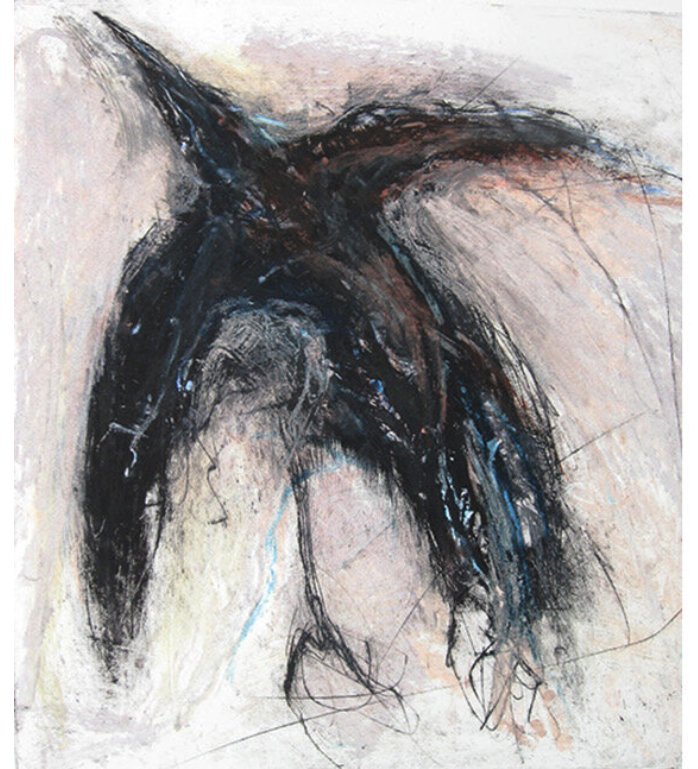
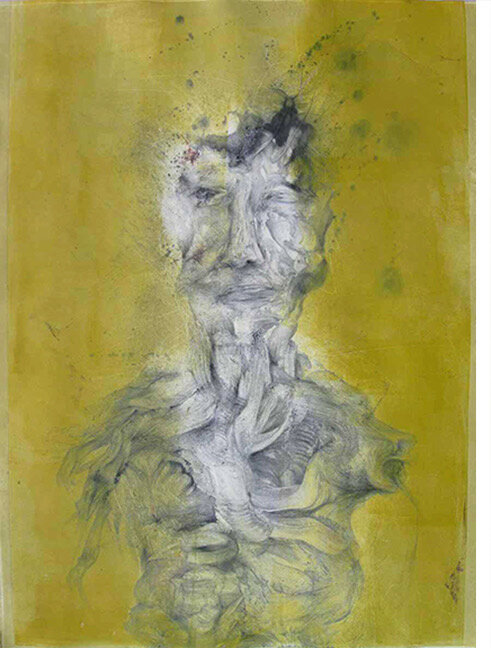

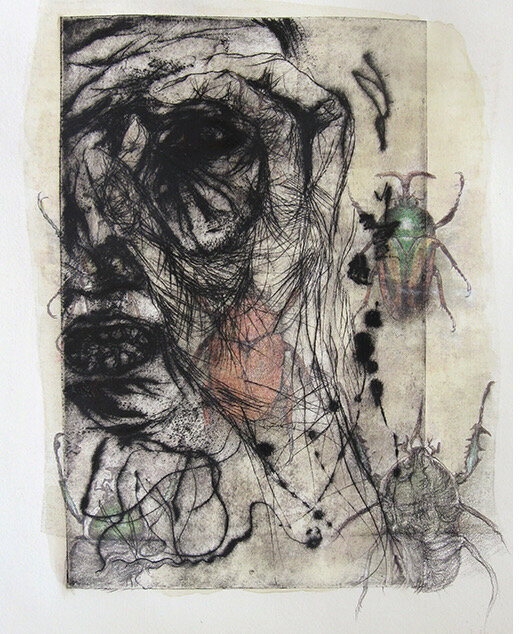


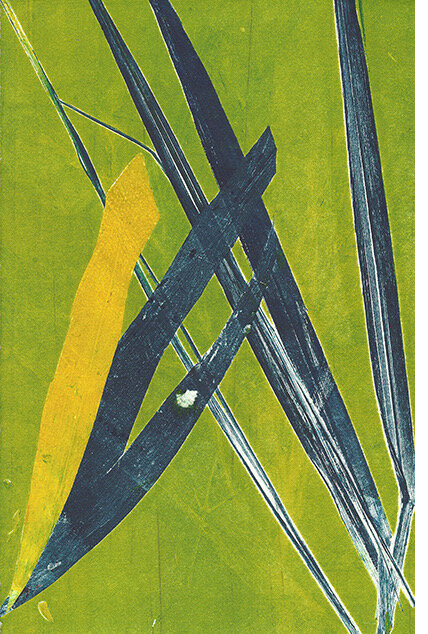

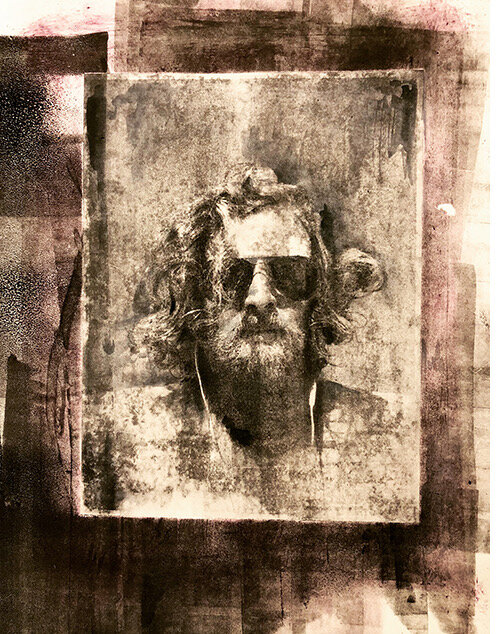


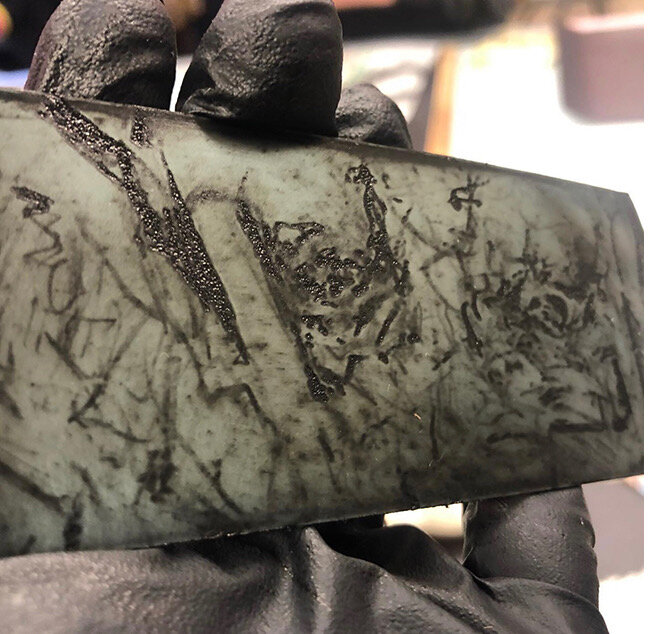





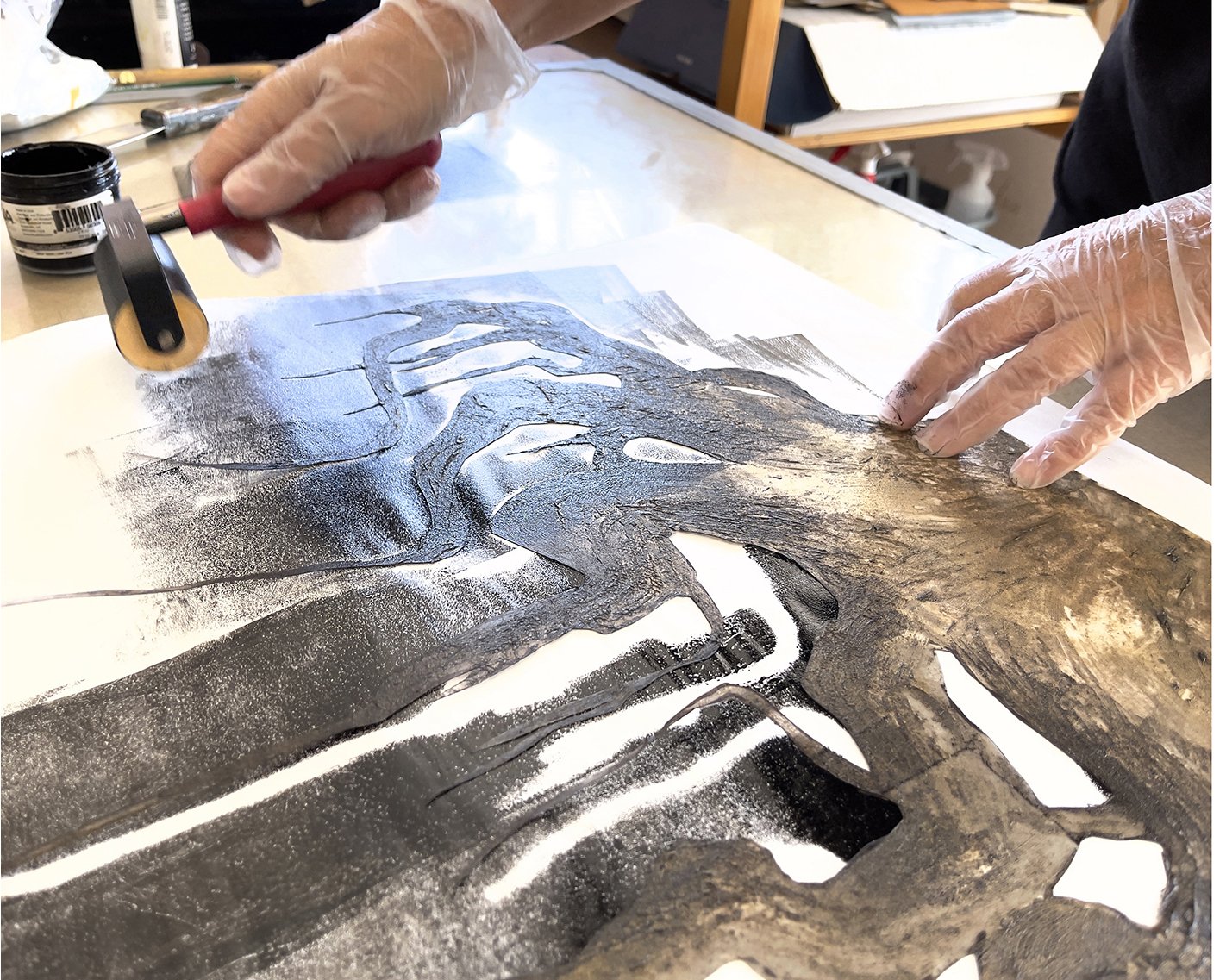


Techniques
The Intaglio Processes
The intaglio printing techniques are processes in which paper is pushed into depressed or recessed lines made in a metal or acrylic plate filled with ink in order to transfer the ink to the paper. The image can be incised on the plate by a sharp tool or etched into it with acids or other chemicals. The impression on the final print is always slightly raised and is perceivable through touch and sight.
Drypoint: Lines are incised into a metal or acrylic plate using a sharp instrument. The cut displaces the metal or acrylic, creating a burr on either side of the incised line. The inking and printing are done in the same fashion as in engraving, but the burr traps additional ink alongside the grooves, resulting in a softer line.
The Relief Processes
Unlike the intaglio techniques, in relief printing the paper picks up the ink from the uncarved surface of the printing block; this surface is usually inked with a roller or a dabber. The grooves created with the carving tools are usually left as white on the final print.
Woodcut: This process has been used since the ninth century in China. The image is carved deep into a block of wood with a knife or gouge. The areas of the image that are carved away will not print. The areas left in relief are inked and the block is passed through a press or the paper is rubbed on top of it.
Linocut: The linocut process uses the same principle as woodcut, but the artist works on a piece of linoleum instead of wood. Reduction relief printing (suicide cut) is a method to achieve a multicolor print using one block. The artist will create a drawn image using two to three different colors. Using their drawing as a guide, they will alternate between printing a color and carving to show the layer beneath.
Monotype and Monoprint
Monotype: The artist makes a unique print by first painting or drawing an image onto a smooth metal or glass surface. The image is transferred to a sheet of paper using the pressure of an etching press or by rubbing the back of it with an instrument. It can only be printed once, although a few successive, paler ghost images may also be printed.
Monoprint: A monoprint differs from a monotype in that the monoprint has an element or image printed from a printing plate. While each print contains the exact same element or image each work is unique. The plate can be inked differently after each pull or, as with a monotype, paler ghost images can also be printed.
Collagraphy
A collagraph refers to a collage of materials glued on to a "printing plate," which is a square of cardboard. When glue is dry, it is shellaced or varnished so that it can be painted with acrylics. Paper is then pressed on to the surface to produce a print. Another collagraph technique involves cutting into the mat board plate to make grooves that can then be inked intaglio or relief style.
Paper Lithography
Paper lithography is a printmaking process that permits you to transfer imagery from a laser photocopy or a drawing made with lithographic pencil on paper, to another surface. The image acts as your plate and is treated with gum arabic and water. As in stone lithography, it works based off the principle that water and oil will repel each other. The oily ink adheres to the toner or grease marker, while the wet paper repels it.
Using a brayer to avoid tearing the surface, ink is layered on the treated planographic image which acts as your ‘paper plate’. Your ‘paper plate’ is then applied to your surface of choice: paper, fabric, 3d objects, plexiglass or linoleum to name a few. Pressure from a etching press or rubbing the back of the wet paper carefully will transfer your image to the new surface.
This technique is versatile in that it can be used to create a print in and of itself or combined with other printmaking techniques to create multilayered images. It opens up new ways for an artist to investigate using their photography, digital imagery or drawings to a multitude of surfaces.
Chine Collé
Areas of thin colored tissue or rice paper are mounted (collage or Collé) on or glued to the surface of a print. Often combined with lithography or etching, the ink of the plate adheres the thin paper to the substrate while the print is run through the press creating a layered effect.
Screen printing
Screen printing is a technique where a mesh is used to transfer ink onto a substrate, except in areas made impermeable to the ink by a blocking stencil. A blade or squeegee is moved across the screen to fill the open mesh apertures with ink, and a reverse stroke then causes the screen to touch the substrate momentarily along a line of contact. This causes the ink to wet the substrate and be pulled out of the mesh apertures as the screen springs back after the blade has passed. One color is printed at a time, so several screens can be used to produce a multi-colored image or design.
Solarplate Etching
A solarplate etching is a nontoxic process to create an intaglio or relief based printing plate. The plate itself is coated with a light sensitive material. The image to be exposed on the plate must be on a transparent base. It can be artwork that is hand drawn, photography, or computer generated imagery. This transparency is then placed on the light sensitive plate which is then exposed to UV light, either from the sun or an artificial source. If the image has a lot of tonal quality to it as a photograph, an aquatint screen must be used. The plate is then developed in water. Areas that are exposed to UV light will harden. Areas that are not exposed wash away leaving various depressions. The plate is then inked accordingly to intaglio or relief printing practices, whichever the artist intends.
Cyanotype
Cyanotype is a photographic printing process made by using a mixture of two chemicals: ferric ammonium citrate and potassium ferricyanide. When the two chemical are combined they become photosensitive and can be applied to several surfaces including paper or fabric. Once the chemicals dry in the dark, they become ready for exposure. Using found objects to create shapes or using a photo negative image printed on transparency film, the artist then exposes the material to sun or a light box to create the cyanotype, a cyan-blue print.
Gelatin Printing
Gelatin Plate Printing is a versatile technique that uses a gelatin plate as its foundation. Ink is rolled directly onto the plate, followed by mark making using diverse tools such as daubers and cheesecloth. When paper is applied, light pressure using the hand is all that is needed to transfer the image. Gelatin is able to capture detailed textures and lends itself to the use of masks and stencils. Ghost prints are possible as are layered images. Alternatively, artists may ink directly on the clean plate with brushes, creating literal images with a painterly effect. Gelatin plate printing is not only exciting but practical in that it requires no press to create complex prints in any setting.
